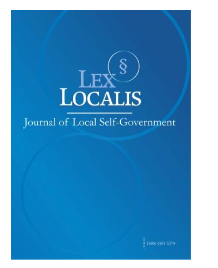INTEGRATING PHYSICAL LITERACY INTO SCHOOL CURRICULUMS: A STRATEGIC APPROACH TO ENHANCING LONG-TERM HEALTH AND WELL-BEING IN ADOLESCENTS
DOI:
https://doi.org/10.52152/jgya3794Keywords:
Physical Literacy; School Curriculum Integration; Adolescent Health and Well-being; Lifelong Physical Activity; Educational Policy and Physical EducationAbstract
The growing prevalence of sedentary lifestyles among adolescents has become a significant public health concern worldwide. Traditional physical education models often fail to instill lasting motivation, competence, and confidence for sustained physical activity. This research explores the strategic integration of physical literacy into school curriculums as a solution to promote transformative long-term health and well-being among young people. Physical literacy, encompassing the motivation, confidence, physical competence, knowledge, and understanding necessary for lifelong engagement in physical activity, offers a holistic framework that extends beyond conventional athletic performance measures.This study examines various models of physical literacy implementation in educational settings, drawing on recent interdisciplinary research from public health, education, and sports sciences. It analyzes how physical literacy-oriented curriculums foster inclusive environments that cater to diverse student abilities, enhance psychosocial development, and build positive attitudes toward movement and health. Through a comparative evaluation of schools that have incorporated physical literacy-focused programs versus those adhering to traditional physical education formats, the paper highlights notable differences in students' activity levels, self-esteem, cognitive skills, and overall academic engagement.Furthermore, the research underscores the critical role of educators, policymakers, and school administrators in shaping a sustainable physical literacy culture. Strategic teacher training, resource allocation, curriculum redesign, and community involvement emerge as pivotal components for successful integration. Special attention is also given to addressing barriers such as socioeconomic disparities, cultural differences, and infrastructural limitations that may hinder effective implementation.The findings advocate for a paradigm shift: positioning physical literacy not merely as a supplementary element but as a fundamental pillar within holistic educational development. When embedded early and systematically, physical literacy equips adolescents with the lifelong tools necessary for maintaining physical activity, mental resilience, and social well-being. Ultimately, integrating physical literacy into school curriculums is not just an educational enhancement but a vital public health strategy capable of shaping healthier, more active generations.This paper concludes by proposing a strategic roadmap for policymakers and educators to adopt evidence-based practices, ensuring that physical literacy becomes an intrinsic and sustainable part of adolescent education worldwide. The implications of this integration suggest profound benefits, extending into adulthood by mitigating risks associated with chronic diseases, mental health disorders, and social isolation, thereby fostering a healthier, more engaged society.
Downloads
Published
Issue
Section
License
Copyright (c) 2025 Lex localis - Journal of Local Self-Government

This work is licensed under a Creative Commons Attribution-NonCommercial-NoDerivatives 4.0 International License.







